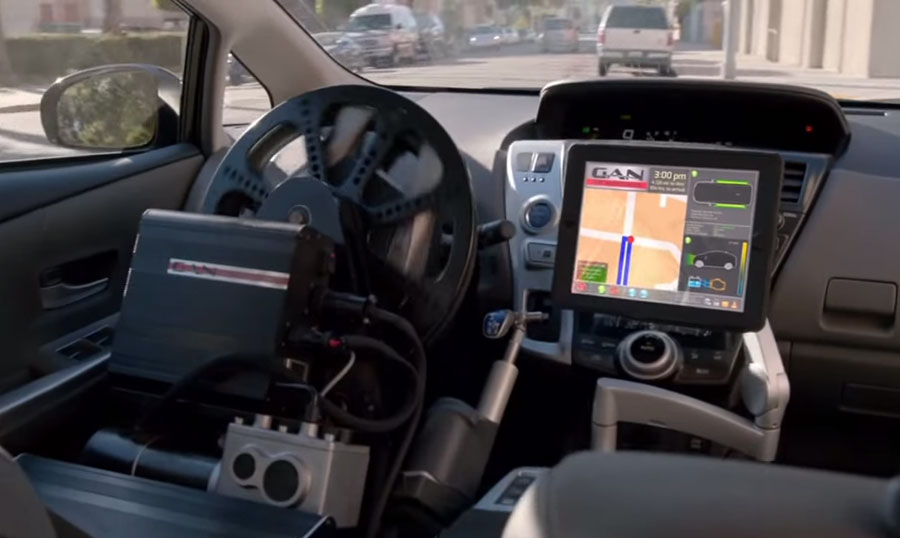Linear actuators are commonly used in automotive applications to control various movements, including opening and closing doors, windows, and hoods. They are compact, reliable, and offer precise control over linear motion. So, yes, linear actuators can be efficient for pop-up engine hoods in cars.
Furthermore, linear actuators lcan be integrated with sensors and control systems to ensure safety and prevent any damage. For example, if an obstacle is detected while the hood is closing, the linear actuator can stop and reverse to prevent injuries or damage. This post focuses on how linear actuators can be used to create automated pop-up engine hoods in cars.

Contents
How Linear Actuators Automated Pop-Up Engine Hood Works
The process of automating a pop-up engine hood using linear actuators involves the following steps:
1. Motor Control
The system begins with a motor that controls the operation of the linear actuators. This motor can be activated using a switch or a remote control.
2. Actuator Mounting
Linear actuators are mounted on the engine hood in strategic locations. The number of actuators required depends on the weight and size of the engine hood. Typically, two or four linear actuators are used for stability and balance.
3. Actuator Extension
When the motor is activated, it sends a command to the linear actuators to extend. The extension process causes the actuators to push against the engine hood, gradually lifting it.
4. Lifting mechanism
The linear actuators are designed with an integrated lifting mechanism. This mechanism ensures that the actuators evenly distribute the lifting force, preventing any tilting or damage to the engine hood.
5. Safety Features
To ensure safety, the system often includes sensors or limit switches. These devices can detect any obstructions or resistance while the engine hood is being lifted. If an obstruction is detected, the system will automatically stop the extension or retract the actuators to prevent any damage.
6. Holding position
Once the engine hood is fully extended, the linear actuators lock in place to hold the hood securely. This allows maintenance work to be carried out without worrying about the hood falling back down.
7. Retraction
When it is time to close the engine hood, the motor reverses the direction of the linear actuators, causing them to retract. As the actuators retract, the engine hood is slowly lowered back into its closed position.
8. Complete Closure
The linear actuators continue retracting until the engine hood is fully closed and latched securely. Once the hood is closed, the linear actuators stop moving.
Essentially, the use of linear actuators in automating a pop-up engine hood provides convenience and ease of access to the engine compartment. It allows for quick and effortless opening and closing of the hood, making maintenance and inspection tasks more efficient.
How To Create An Automated Pop-Up Engine Hood Using Linear Actuators
Linear actuators can be used to create an automated pop-up engine hood by providing the necessary pushing or pulling force to raise and lower the hood. Here’s a general process to create an automated pop-up engine hood using linear actuators:
1. Design And Plan
Determine the specific requirements and measurements for your hood mechanism. Consider factors such as weight, space availability, and power source.
2. Choose Linear Actuators
Select linear actuators suitable for your specific application. Consider factors such as load capacity, stroke length, speed, and power requirements.
3. Mounting
Install the linear actuator(s) securely on the appropriate locations of the engine hood frame. Make sure they are aligned properly and can provide the necessary force to lift the hood.
4. Linkage System
Create a system of mechanical linkages using rods, brackets, or other components to connect the linear actuator(s) to the engine hood. This linkage system will transfer the linear motion of the actuator into the desired vertical movement of the hood.
5. Power Supply
Ensure a suitable power supply is available to provide electrical power for the linear actuators. This could be a battery-powered system or connected to the vehicle’s electrical system.
6. Control System
Implement a control system to regulate the movement of the linear actuators and control the opening and closing of the hood. This can be done using switches, sensors, or a programmable logic controller (PLC) system.
7. Safety Considerations
Incorporate safety features such as limit switches or sensors to prevent the actuator(s) from overextending or damaging the hood or vehicle components.
8. Testing and Refinement
Test the automated pop-up hood system to ensure its proper functionality and make any necessary adjustments or refinements.
9. Final installation
Once the system is properly tested and refined, finalize the installation by securing all the components, wiring, and connections.
However, note that it’s essential to consult relevant guidelines, safety standards, and regulations while designing and implementing such a system, as it involves modifications to a vehicle’s structure.
Is Linear Actuators Automated Pop-Up Engine Hood Safe?
The safety of a linear actuator automated pop-up engine hood depends on various factors such as the design, installation, and operation. When designed and installed properly, it can provide convenience and functionality. However, it is crucial to ensure that it meets the necessary safety standards, such as having proper safety mechanisms to prevent accidental opening or closing and adequate strength to withstand various conditions and forces.
Regular maintenance and inspection are also important to ensure continued safe operation. It is recommended to consult with professionals or experienced technicians for proper installation and maintenance to ensure the safety of the automated pop-up engine hood with linear actuators.
Conclusion
Using linear actuators for pop-up engine hoods in cars can improve user experience, enhance efficiency, and add a touch of sophistication to the car’s design. By using a linear actuator for a pop-up engine hood, car manufacturers can automate the opening and closing process, providing convenience to users.
Additionally, linear actuators can provide the necessary force and speed required for the smooth and efficient operation of the hood. With careful installation and proper maintenance, a linear actuator automated pop-up engine hood will be perfect for your car.